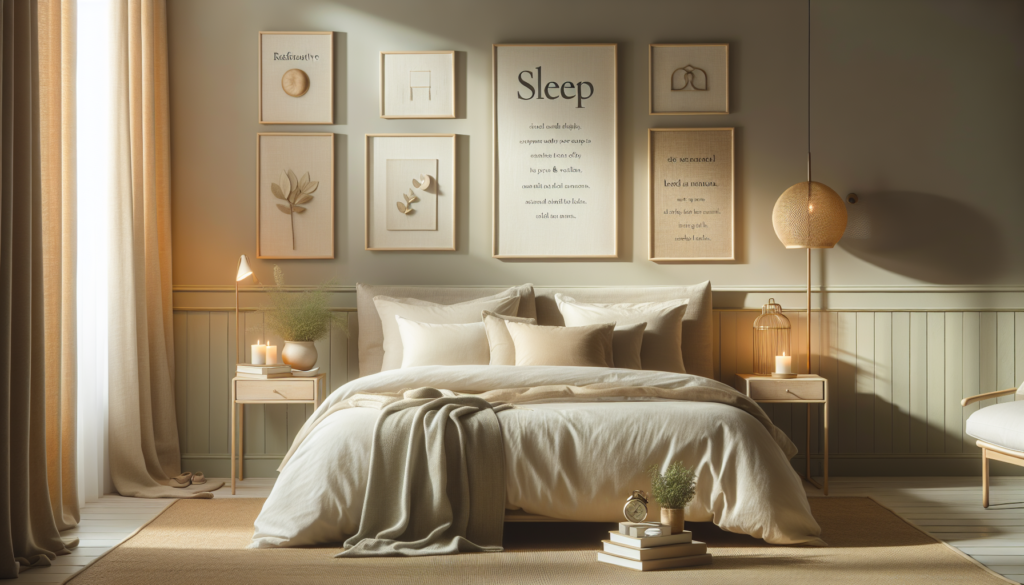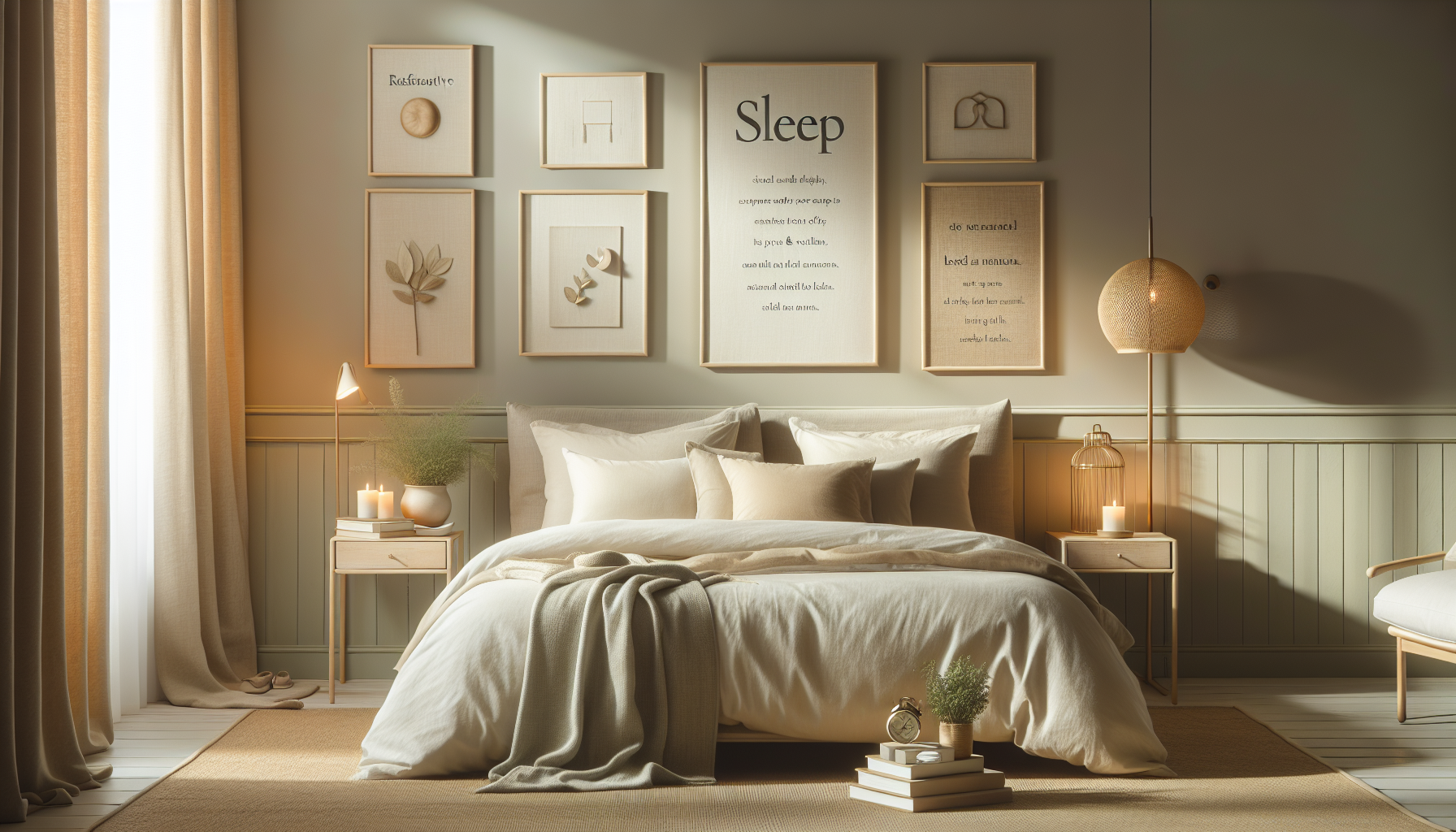Understanding the Role of Sleep in Your Fitness
Have you ever wondered why your exercise routine feels like a battle of epic proportions against your bedhead? You march into the gym with high hopes and an even higher caffeine level, only to feel like a sloth attempting to outrun a cheetah. Could it be that you’re out of shape? Or perhaps, just maybe, it’s your sleep to blame? Buckle up, because we’re about to embark on a sleep-filled journey to discover how much of a role sleep plays in your quest for Olympic glory—or at least in pretending you like burpees.
The Connection Between Sleep and Performance
The relationship between sleep and fitness isn’t a complicated romance novel, but it’s every bit as dramatic. Picture sleep as the unsung hero of your fitness journey. It stands by you quietly, while your protein shakes hog the limelight and your sportswear acts like it’s doing all the heavy lifting.
The Science Behind Sleep and Muscles
Ah, science—the ultimate party crasher. Let’s chat about how sleep impacts those muscles you’re working hard to flaunt. When you’re snuggled in bed dreaming of kettle bells, your body goes into repair mode. Growth hormones are released like they’re the headliner at a rock concert, which aids in muscle recovery and growth. It’s like having a nightly muscle spa appointment, albeit one where your masseuse is an assortment of hormones with degrees in fitness therapy.
Energy Levels and Sleep: Partners in Crime
Picture life as a video game, with sleep being your power-up potion. Without it, your energy bar is depleting faster than an ice cream cone on a hot day. Lack of sleep impairs your body’s ability to store glycogen, the energy that fuels your workouts. So unless you fancy the idea of crawling to your Zumba class, prioritize your slumber. Sleep-deprived workouts aren’t just less effective—they’re a quick trip to Injury Town, population you.
The Sleep Stages: Your Nightly Performance
Get ready for the unwritten laws of sleep, a nightly performance more mysterious than your neighbor’s obsession with lawn gnomes. Sleep isn’t just about closing your eyes and hoping for the best; it’s a complex line-up featuring several stages, each with their specific roles in the specter of fitness gains.
Stage 1 and 2: Light Sleep, Heavy Lifting (Not Really)
During these initial sleep stages, your body is winding down. Your heart rate decreases, and you’re slipping into oblivion while your muscles do the equivalent of their warm-up routine. While these stages won’t sculpt your abs, they set the stage (no pun intended) for the real show—which is stage 3 and beyond.
Stage 3: Deep Sleep – The Sweet Spot
Welcome to the main event—the big leagues. Deep sleep is where all the magic happens. This is your muscle recovery haven, where tissue repair and growth hormone release run the show. Getting enough deep sleep is akin to hiring a personal trainer for your cells, one who doesn’t judge your affinity for hitting the snooze button.
REM Sleep: Dream Big
REM sleep is where your brain gets its own workout and, as a bonus, you might dream of competing in the Olympics alongside hamsters (hey, we don’t judge). This stage is pivotal for mental recovery, ensuring you have the willpower to bypass the donut aisle and head to the treadmill instead. Dreams might not build muscles, but they do a fine job of preparing you to mentally conquer that extra set of squats.

Quality vs. Quantity: The Sleep Dilemma
Just as you wouldn’t settle for a lukewarm latte, you shouldn’t compromise on sleep quality. It’s not just about counting sheep or hours but ensuring that those hours are as quality as your impulse Amazon purchases at 2 a.m.
The Optimal Sleep Duration
Eight hours is the golden rule, right? Not so fast. Much like deciding if pineapple belongs on pizza, it’s subjective. For someone who’s actively working out, you might find that you need more. Studies have shown athletes perform better when clocking in nine to ten hours. Wait too long for your nightly workout, and you might find yourself as functional as a soggy noodle.
Importance of Sleep Environment
Your sleep environment plays a pivotal role in sleep quality. While we advocate for picturesque boudoir aesthetics, focus more on comfort. Black-out curtains transform your room into a midnight cave and ditch those electronics that keep your room more lit than a club at midnight. Aim for tranquility, whispering the promise of successful squats.
Sleep Disorders: The Fitness Nemesis
The villain in your sleep story may not be your bad habit of midnight snacking (though reconsider those Oreos); it could be a pesky sleep disorder. These sneaky culprits might be sabotaging your goals, making your morning workout feel like something out of Dante’s Inferno.
Insomnia: A Wide-Awake Nightmare
Insomnia is like that one friend who overstays their welcome. You know, the one who’s always available even when you’re trying to get some R&R. Its impact on fitness can’t be overstated. Whether it’s causing sluggish workouts or sneaky weight gain, nipping insomnia in the bud is critical.
How to Battle Insomnia
Here’s the game plan for tackling insomnia: create a consistent sleep schedule, even on weekends—yes, those Sunday sleep-ins are just a memory now. Turn your bedroom into a tech-free zone and indulge in pre-sleep rituals like reading or perhaps, interpretive pillow dancing (it’s a thing now).
Sleep Apnea: Snore More, Lift Less
Sleep apnea’s impact on fitness is profound; it turns your gym sessions into a tired melodrama. When sleep apnea rears its head, your body doesn’t get enough oxygen, making it harder to tackle those HIIT workouts. Think of it as breathing through a soggy sock—a tad inconvenient.
Solutions for Sleep Apnea
Making lifestyle changes is often the first step, like weight loss, quitting smoking, and swapping your partner’s snoring for the dulcet tones of ocean waves (recorded, obviously). Medical interventions like CPAP machines can do wonders, provided you learn to love looking like a sci-fi character come bedtime.

Nutrition, Sleep, and Fitness: A Trickier Love Triangle
We can’t talk about fitness and sleep without inviting nutrition to this awkward yet essential ménage à trois. The trifecta of your health journey, these three dance a dance more intricate than your last attempt to learn salsa.
Pre-Bedtime Snacks: Yay or Nay?
Ah, the infamous midnight snack—friend, foe, or curious bystander? Choosing the right pre-bedtime snack runs deeper than your relationship with Netflix. Opt for sleep-enhancing foods like almonds, bananas, or that exotic chamomile tea you’ve been pretending to enjoy. Avoid heavy, rich meals; they’ll have you dreaming of battling dragons, just stomach-based ones.
Hydration: Sleep’s Little Helper
Keep your body hydrated throughout the day, but curb the guzzling two hours before bedtime unless you enjoy bathroom marathons in the dark. Finding the balance is key; yes, you’re aiming to hydrate that body like the well-oiled machine it is, but not at the expense of tiptoeing around furniture at 3 a.m.
How to Develop Healthy Sleep Habits
Consider developing healthy sleep habits akin to assembling Ikea furniture—tedious yet oh-so-rewarding. Incorporating these habits might seem laborious, but they make a noticeable difference in how you strut into the gym, energy levels soaring like you’re channeling your inner Beyoncé.
Nailing the Sleep Schedule
It’s not rocket science; our bodies thrive on routine. Hitting the sack and waking up at the same time can transform your workouts from sluggish to spectacular. It’s more potent than ten protein shakes blended together. Plus, consistency gives your circadian rhythm front-row seats to the greatest show of all time: You. Sleeping.
De-Stress Before Bed
Establish a pre-sleep ritual that relaxes you, like unimpressive amounts of gentle yoga or meditative breathing exercises—anything that helps you avoid spiraling into the well of existential dread. Remember, reading by candlelight might look romantic, but it’s the quickest route to reading yourself to sleep.
Fitness Goals Deserve a Sleep Strategy
Understanding the role of sleep in your fitness regime is like discovering that your favorite rendition of “Hotel California” is actually a breakup song—it’s pivotal, unexpected, and a bit mind-blowing. When we neglect sleep, we’re doing our bodies a disservice, akin to wearing swim trunks to a formal dinner.
Personalizing Sleep for Fitness
Like that hipster barista customizing your daily latte, personalize your sleep strategy. Listen to your body, address those tired signals, and adapt care routines accordingly. Fitness goals deserve a sleep plan that’s as fine-tuned as your Spotify playlist for ear-shattering squats.
Tracking Sleep: Data Done Right
Embrace technology, even if your relationship with it is mostly one-sided arguments with Siri. Use fitness trackers and apps to monitor your sleep patterns. It’s not about a competition for the sleep crown, but a tool to reach your peak physical potential—unless, of course, there’s actual sleep Olympics… in which case, you’re ready.
Conclusion: Wrapped in the Arms of the Sleep-Deprived
In conclusion, sleep is the secret sauce to your fitness gumbo—the missing piece to the puzzle where your triceps finally take the spotlight they’ve been waiting for. Don’t let sleep be the overlooked fifth Beatle of your fitness journey; instead, award it the status and esteem it rightfully deserves. Sleep tight, knowing it’s got your back as you push for gains—gym-induced or otherwise.
If you find yourself, after all this, still treating sleep like a distant cousin you always forget to call, why not give it the front-row seats around your life’s table? Give it the love and respect it deserves, and reap the well-rested, fit rewards. And never underestimate the power of a good pillow—your workout awaits.
